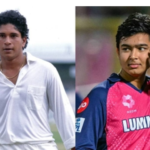It has been a lifelong wish of mine to witness a Theyyam, a ritualistic dance that manifests the physical presence of local deities. And it has been a matter of shame that I have not been able to do this despite my family temple too organising a Theyyam once in two years. This time, I did not want to miss out and made sure I was in North Kerala for the occasion. That was not all, I wanted to ensure I captured the special moments for the family and thought it was a good occasion to test out the new Nikon Z6III full-frame mirrorless camera.
As I packed my bags for Kerala, I realised the Nikon Z6III was a proper DSLR and heavy. I got a shoulder sling — my preferred mode of carrying around DSLRs — locked into the camera so that weight did not start affecting my weak back. The camera does offer a good grip, with dials at finger length so that you can quickly adjust without taking your eyes off the frame. After all, this is a full-fledged DSLR camera and I was using it with a 28-75mm Nikkor lens.
I am not a regular DSLR user anymore, and I was a bit worried that the settings would confuse me, especially when under pressure to click the best shots under challenging low-light conditions. I was wrong. The Nikon Z6III is not overwhelming despite the wide range of settings and options on offer. I was shooting mostly in Manual mode, preferring to use the viewfinder instead of the 3.2-inch monitor for stills — it is hard to get rid of muscle memory. You can control almost everything with the dials and buttons on the camera, as well as by tapping any value on the screen and adjusting it to your needs. I felt the UI has now evolved and is far more intuitive, like with the ISO where you can just go to the highest point in one tap.
Theyyam performances usually last almost a day, starting one evening and going on till the next afternoon, making it a tough task shooting it. A lot of the interesting bits happen late at night with fires as well as smoke and the crowd coming in the way of an easy frame. And this is where I was most impressed by the Nikon Z6III’s ability to lock on to the subject with a simple soft press of the shutter. The camera has 299 focus points in auto-focus and this means you can create some exciting compositions where you are locking the camera on some very precise points in the frame.
And being a mirrorless camera with a 35.9 mm x 23.9 mm 26MP sensor, the camera has absolutely no issues with low light. And by this I mean it can make a dark Kannur night look like a mid-afternoon on the nearby beach with an ISO sensitivity going up to 64000, plus three stops.
Starting from the puja as the small family shrine, to the Theyyams preparing their gear, dressing up and then transforming into their divine identities, there were a lot of stages with different settings and challenges for the Nikon Z6III. But this is the sort of camera that you don’t have to worry about and just clicks exactly what you are seeing once you get hang of the best settings for the output you want. The camera offers the ability to save your settings precisely or to just switch to full auto mode when everything gets a bit too complicated and overwhelming.
Now, all these features also make the Nikon Z6III a full-fledged movie camera. However, this is where the camera has a slightly different setting. You need to switch to the video mode before you can start recording. And this also means the camera will record on the CFexpress card so that you are not struggling with saving the high-resolution files going up 5.5K at 60fps. In the settings, you can select if you want to save on the SD card too, but then invest in a really high-speed card.
In the scenes where Theyyam paces about angrily, rushing towards the camera, the auto-focus adjusts to lock the details in a jiffy. And this too with changing light conditions as the deity moved from covered to open parts of the courtyard. And though I did not use any microphone attachments, the audio quality was great when played back later on a MacBook. You have a mic and headphone jack, as well as a full HDMI port and USB-C which give you endless possibilities covering all use cases.
My only issue was with the monitor which had a tendency of shutting down at times. I could not figure out what was triggering it and had to resort to the viewfinder in such cases.
The Nikon Z6III is also a very contemporary device and you can use the SnapBridge app to download all the footage and stills to your phone for posting or sharing. You might need to use a compressed format to move files if in a hurry. After the tour, I transferred about 300 images and movies in about 30 minutes at full size. However, you can set up auto-syncing with the phone. The app can also be used to shoot remotely. Meanwhile, the photos I have clicked are being printed in high quality to be framed for my walls.
With prices starting at Rs 2,18,490 for the body, the Nikon Z6III is a versatile camera that is primarily aimed at professional photographers and prosumers who can push their capabilities beyond hobbyists. It is a camera that stands you in good stead for 2025 and the coming years as it has all the connectivity you need. But this might be an overkill for vloggers and part-timers.








